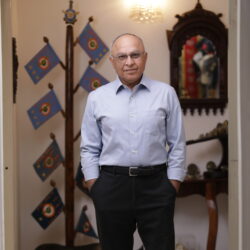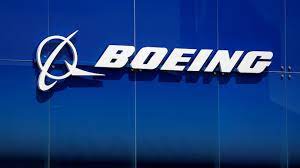
Pic Courtesy: Internet
Significant changes are occurring globally across various aspects of society, politics, economics, technology, and the environment. The world is undergoing a period of transformation, where traditional structures, systems, and paradigms are evolving or giving way to new ones.
International governance and engagement order and systems are changing.
Existing organisations/institutions no longer cater to the interests of all countries.
Multilateralism is changing to unilateralism.
Regional organisations and alliances are springing up.
Bilateral engagements are becoming issue-based.
Agreement on some issues and disagreement on others is becoming an acceptable norm.
Collective security is still relevant but with some changes.
The pandemic has exposed the fault lines in international engagements and highlighted the issue of trust deficit.
The pandemic and the ongoing conflicts (Russia-Ukraine and Israel-Hamas) have exposed the lack of resilience in supply chain aspects.
Technology is changing the conduct of domestic and international politics by influencing decisions and actions.
International engagements are by two main factors, Interests and Ideology. In my opinion, in recent times Interests have become predominant.
However, Ideology cannot be ignored. Beyond a particular threshold, ideology-based public opinion would influence the decisions and actions.
The flaws in the existing model of globalisation have been exposed. It is excessively centralised, benefitting few and is prone to supply chain disruptions due to natural or man-made situations.
Reverse globalisation has begun, with decoupling taking place with centralised centres. There is an opportunity for some to offer alternatives.
Most countries are pursuing the policy of self-reliance (Atmanirbharta).
Those who are reliant on others and do not have indigenous wherewithal and capability are looking and multiple sources.
The dollar as an international trade currency is being challenged. It was challenged earlier also but managed to retain its control. This time it is different as the challenge is from multiple quarters.
Several countries are formulating trade arrangements with exchange agreements in local currencies.
World power dynamics are changing from Bipolar to Unipolar to now Multipolar, with several power centres growing.
China is competing with the USA for the number one position, while the USA is trying to retain its leadership.
There is a fear of the Thucydides Trap resulting in conflict between the USA and China, adversely affecting the world.
Cold War 2.0 is starting.
China is converting its economic growth and technological development into military and political power.
China is displaying expansionist intent with belligerent and aggressive attitude.
The nature of conflict is undergoing a radical change.
The line between the state of war and peace is getting blurred. The absence of declared war does not mean no enemy hostile action.
Anything and everything is being used as a weapon.
New domains of warfare are emerging (Cyber, Space, Information and Electronic).
The new methods of conduct of conflict, create man-made disaster situations.
The conflict is no longer restricted to the military, the effect can be directly on the general public.
Bottom Line
The bottom line is to adapt to these changes and make appropriate changes in foreign and security policies.
Question
Are we doing the needful correctly and fast enough?
After Thought
Inspite of decades and centuries of exploitation and ravaging Asia is bouncing back and growing. Coming century belongs to Asia. Provided we do not repeat the history and lose the opportunity by infighting.
Suggestions and value additions are most welcome
For regular updates, please register here:-
References and credits
To all the online sites and channels.
Disclaimer:
Information and data included in the blog are for educational & non-commercial purposes only and have been carefully adapted, excerpted, or edited from sources deemed reliable and accurate. All copyrighted material belongs to respective owners and is provided only for purposes of wider dissemination.


